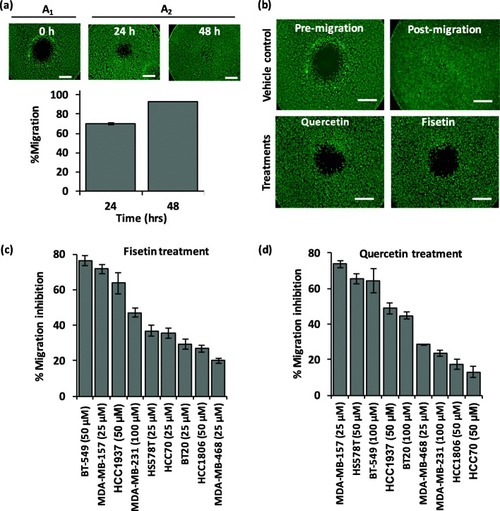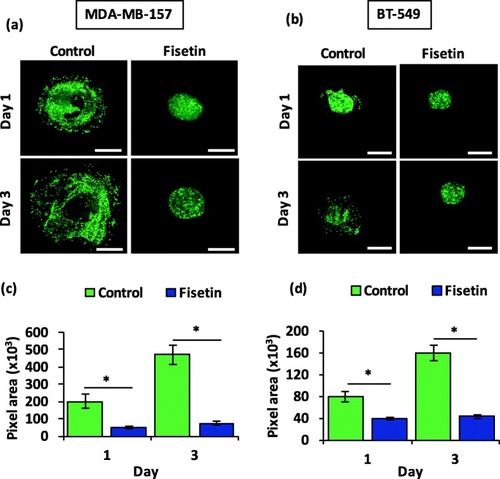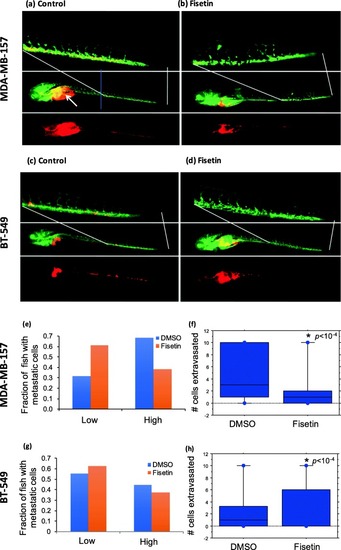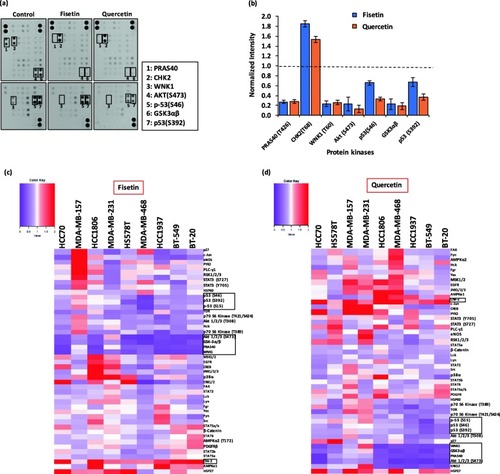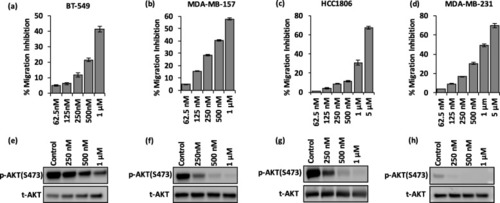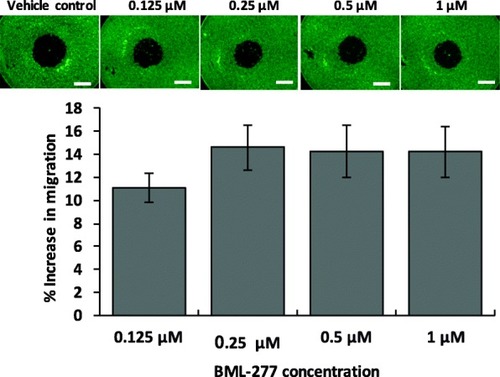- Title
-
Phytochemicals inhibit migration of triple negative breast cancer cells by targeting kinase signaling
- Authors
- Shahi Thakuri, P., Gupta, M., Singh, S., Joshi, R., Glasgow, E., Lekan, A., Agarwal, S., Luker, G.D., Tavana, H.
- Source
- Full text @ BMC Cancer
|
Phytochemicals inhibit migration of TNBC cells. |
|
Fisetin inhibits collagen invasion of TNBC cells. Z-projected images of spheroids of ( |
|
Fisetin treatment reduces TNBC metastasis in vivo. MDA-MB-157 and BT-549 cells were injected into two-day post-fertilization zebrafish embryos. Fish were treated either with 0.5% DMSO or with 100 μM Fisetin. Cells were allowed to migrate to the tail for 4 days. PHENOTYPE:
|
|
Molecular effects of phytochemicals on TNBC cells. |
|
GSK1059615 dose-dependently inhibits migration of TNBC cells. |
|
Inhibition of checkpoint kinase 2 (CHK2) promotes migration of TNBC cells. Dose-depending inhibition of CHK2 using BML-277 increases migration of MDA-MB-231 cells. Each bar represents a mean of 8 samples and error bars represent standard error from the mean. Scale bar is 1 mm |

